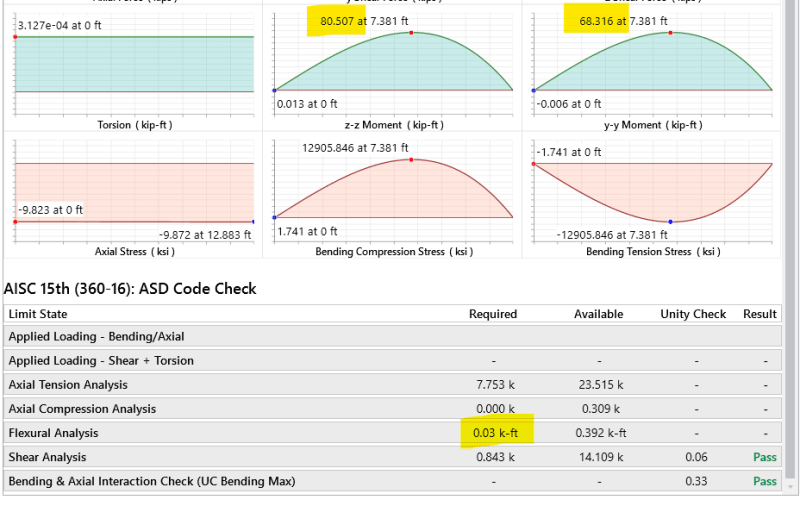Structural noob
Structural
Hello folks!
I was wondering if there is a way to model a axial only member in RISA such that it would take no moment. I'm trying to model a wire rope that is picking up a frame at 4 points and would prefer it to be an axial only (tension only) member. Right now I have modeled it as a tension only member but I am still seeing pretty high moments in the wire rope which for some reason don't show up in the detailed report that RISA generates - see RISA snapshot here ->

Is the moment due to P-delta irregularities? I do get a warning from RISA which says "Could not obtain accurate results of sectional deflections and moments with Geometric Nonlinear Stiffness P-delta method. Please consider adding internal nodes or subdividing the member" When I add a couple of nodes to the four wire rope members the moment goes away. But I was just curious if there was a way to model Axial only members in RISA so as not to add any internal nodes.
I was wondering if there is a way to model a axial only member in RISA such that it would take no moment. I'm trying to model a wire rope that is picking up a frame at 4 points and would prefer it to be an axial only (tension only) member. Right now I have modeled it as a tension only member but I am still seeing pretty high moments in the wire rope which for some reason don't show up in the detailed report that RISA generates - see RISA snapshot here ->

Is the moment due to P-delta irregularities? I do get a warning from RISA which says "Could not obtain accurate results of sectional deflections and moments with Geometric Nonlinear Stiffness P-delta method. Please consider adding internal nodes or subdividing the member" When I add a couple of nodes to the four wire rope members the moment goes away. But I was just curious if there was a way to model Axial only members in RISA so as not to add any internal nodes.
